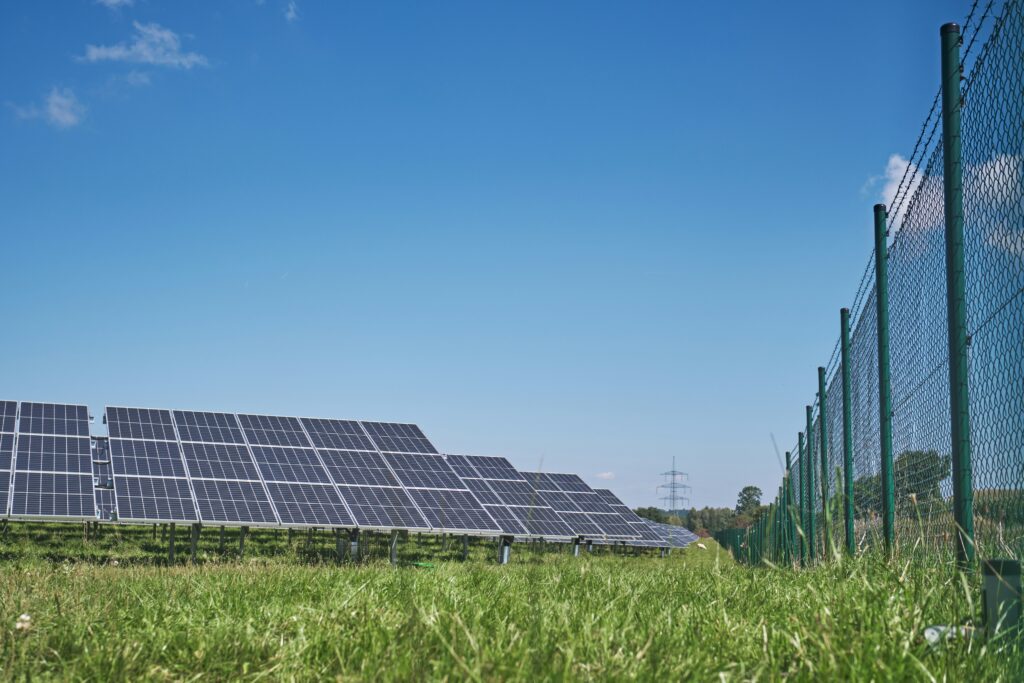A Brighter and Cleaner Future in Energy
By Theo Rose | Staff Editor
April 12, 2024
—
Fossil fuels as an energy source powered considerable socioeconomic development, which created environmental challenges that need a global solution.[1] Renewable energy provides a bridge to supply increased power demands and reduce humans’ environmental impact.[2] However, renewables present their own environmental challenges and cannot meet current energy demand.[3] Yet, the International Energy Agency predicts that renewable energy will supply 95% of the increase in global demand between 2023 and 2025.[4] To prevent renewable energy from perpetuating environmental damage, however, policymakers must develop sustainable and diverse energy policies.
Photovoltaic solar relies on panels that have limited lifespans. One hundred thousand tons of solar panel waste sit in United States landfills today.[5] Projections indicate that the United States will have one million tons of solar panel waste by 2030and 22 billion tons of solar waste by 2050.[6] Disposing of panels in landfills wastes valuable materials[7] and can allow harmful substances to leach from the panels to surrounding environments.[8] But panels can be recycled.[9] Accordingly, legislation that requires panels to contain minimum recycled content offers an attractive solution to establish a sustainable solar energy industry.
Yet, improvements should not stop with solar panels. As the world shifts from fossil fuels, policymakers need to encourage development and implementation of other clean energy sources. For example, nuclear fusion could produce electricity without carbon emissions.[10] Nuclear fusion powers the sun and other stars.[11] In 2021, scientists in California reignited interest in nuclear fusion power when they produced more energy from a nuclear fusion reaction than they used to create the reaction.[12] Nuclear fusion’s energy-generating potential warrants further government investment and could factor into future energy policies.[13]
Additionally, the United States increasingly relies on existing nuclear technology to further clean energy goals.[14] Nuclear fission offers the second largest source of low-carbon electricity today.[15] Nuclear technology could meet energy needs while waiting for more and better renewables.[16] Nuclear energy helps prevent over 500 million tons of carbon dioxide from entering the atmosphere annually.[17] To continue reaping the benefits of nuclear energy, United States utilities will need to extend the lifespan of existing reactors, implement small modular reactors, and continue to invest in technological development, like nuclear fission.[18]
—
[1] EPA, Causes of Climate Change, Climate Change Science, (Apr. 25, 2023), https://www.epa.gov/climatechange-science/causes-climate-change.
[2] Renewable energy sources include solar photovoltaic, concentrated solar, geothermal, biomass, hydropower, and marine and hydrokinetic power. See generally Samuel Koebrich et al., 2018 Renewable Energy Data Book 4 (Mike Meshek & Gian Porro eds., 2020); see also Merrian C. Fuller et al., Toward a Low-Carbon Economy: Municipal Financing for Energy Efficiency and Solar Power, 51 Env’t. Mag. 22, 24 (2009).
[3] Intl. Energy Agency, Nuclear Power in a Clean Energy System 8 (2019), https://iea.blob.core.windows.net/assets/ad5a93ce-3a7f-461d-a441-8a05b7601887/Nuclear_Power_in_a_Clean_Energy_System.pdf.
[4] Intl. Energy Agency, Electricity Market Report 2023 6.
[5] Yan Xu et al., Global Status of Recycling Waste Solar Panels: A Review, 75 Waste Mgmt. 450, 453 (2018).
[6] Stephanie Weckend, et al., End-of-Life Management: Solar Photovoltaic Panels, Intl. Renewable Energy Agency 25, 34 (2016); see also Atalay Atasu, et al., The Dark Side of Solar Power, Harvard Business Review, (June 18, 2021), https://hbr.org/2021/06/the-dark-side-of-solar-power (explaining that solar panel waste might exceed current projections if consumers opt for early replacement).
[7] Hernandez-Lopez Daniela-Abigail et al., Does Recycling Solar Panels Make This Renewable Resource Sustainable? Evidence Supported by Environmental, Economic, and Social Dimensions, 77 Sustainable Cities & Soc’y 103539, 39 (2022) (explaining that recycling panels would enable a 66% reduction in the total materials and energy consumed to develop solar energy); Rachel Snead, Washington State Tackles Solar Panel Waste, the Dirty Side of Clean Tech, Envtl. And Energy Study Institute (Feb 24, 2021), https://www.eesi.org/articles/view/washington-state-tackles-solar-panel-waste-the-dirty-side-of-clean-tech.
[8] Michael Shellenberger, If Solar Panels Are So Clean, Why Do They Produce So Much Toxic Waste?, Forbes (May 23, 2018), https://www.forbes.com/sites/michaelshellenberger/2018/05/23/if-solar-panels-are-so-clean-why-do-they-produce-so-much-toxic-waste/#3e355219121c (explaining that solar panels contain toxic materials that can become contaminate environments when they leech).
[9] See generally C.C. Farrell et al., Technical Challenges and Opportunities in Realizing a Circular Economy for Waste Photovoltaic Modules, 128 Renew. Sustain. Energy Rev. 12 (2020) (explaining that recycling solar panels prevents waste and promotes sustainability).
[10] U.S. Gov. Accountability Office, Fusion Energy, Potentially Transformative Technology Still Faces Fundamental Challenges (Mar. 30, 2023), https://www.gao.gov/products/gao-23-105813.
[11] Id.
[12] Daniel Cleary, With Historic Explosion, A Long-Sought Fusion Breakthrough, Sci. News (Dec. 13, 2022), https://www.science.org/content/article/historic-explosion-long-sought-fusion-breakthrough.
[13] Pearle M. Lipinski, Considering the Price-Anderson Act’s Federal Public Liability Action Provisions in the Future of Nuclear Fusion Power, 22 Colo. Tech. L. J. 1, 16–18 (2023); David A. Repka & Tyson R. Smith, Deep Decarbonization and Nuclear Energy, 48 ELR 10244, 10248 (2018).
[14] See, e.g., Energy Act of 2020, Pub. L. 116-260 Div. Z §§ 2001-2008, 116th Cong. (2021) (offering Congressional support for billions of dollars for programs that include advanced fuel development, demonstration projects for advanced nuclear reactors, and development of fusion power plants); Nuclear Energy Innovation and Modernization Act, Pub. L. 115-439, 115th Cong. (2019) (calling for developments that would “allow innovation and commercialization of advanced nuclear reactors”); Dep’t of Energy, DOE Establishes $6 Billion Program to Preserve America’s Clean Nuclear Energy Infrastructure (Feb. 11, 2022) (stating that nuclear power plants are essential to achieving the United States’ clean energy goals).
[15] Intl. Renewable Energy Agency, supra note 3, at 8.
[16] Id. at 80 (explaining that renewable energy has failed to lower overall carbon emissions because it often replaces nuclear generation); Ahab Abdel-Aziz, Reimagining the Future of Nuclear Power Generation, 69 Nat. Res. & Energy L. Inst. 3-1, 1, 2, 4 (2023) (explaining that nuclear can meet energy demands that grow with global populations and electrification).
[17] Intl. Energy Agency, supra note 3, at 20; Dept. Of Energy, Three Reasons Why Nuclear Is Clean and Sustainable (Mar. 31, 2021); see also Mass. Inst. Tech., The Future of Nuclear Energy in a Carbon-Constrained World, at xi (2018) (explaining the cost effectiveness of using nuclear).
[18] Abdel-Aziz, supra note 17, at 33–37.

